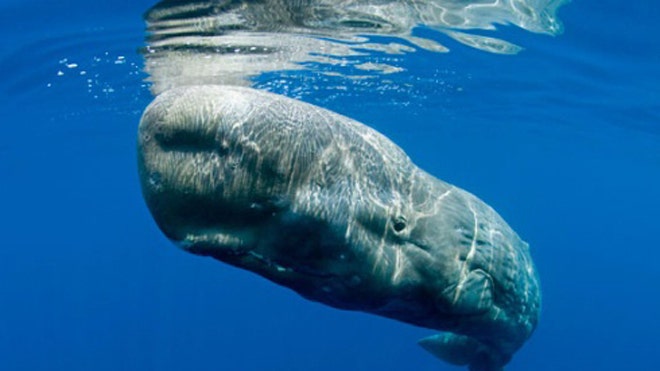I hate big oil…
VIA – FOX NEWS
Whales sensed Deepwater Horizon oil rig disaster
Written By Peter Gwynne
Published April 08, 2012
Inside Science News Service

A sperm whale. (Franco Banfi)
technique that monitors whales through the sounds they emit has answered a key issue raised by the explosion of the Deepwater Horizon oil rig in the Gulf of Mexico two years ago this month.
The sound-monitoring technique revealed that sperm whales retreated from the immediate area around the spill caused by the explosion.
“There’s obvious evidence of relocation,” said team member Azmy Ackleh, professor and head of mathematics at the University of Louisiana at Lafayette.
The discovery is important because it provides information about a species almost hunted to extinction for its valuable oil in the 19th century.
Sperm whales are listed as endangered under the terms of the United States Endangered Species Act, and estimates of their population vary between 200,000 and 1.5 million worldwide.
However, said Vassili Papastavrou, lead whale biologist for the International Fund for Animal Welfare who did not work on the study, “sperm whales are difficult animals to count, because they spend so much of their lives beneath the surface. The overall population estimates are so uncertain that it is not possible to determine trends.”
The discovery of their relocation also indicates the value of “passive” acoustic technology, which quietly listens for things instead of actively bouncing sounds off objects to find them. This approach, first tried in the 1980s, uses hydrophones mounted on buoys to detect “clicks,” the powerful sounds emitted by the sperm whales. The University of Louisiana team, led by Natalia Sidorovskaia, associate professor and chair of the physics department, has extended the technology to localize and track sperm whales and to estimate their populations, and to do the same for other marine mammals, including other types of whales and dolphins.
Traditionally, zoologists have measured the location and size of whale populations by spotting them from boats or tagging individual whales with radio transmitters. While visual surveys are often inaccurate, tagging is very expensive.
The use of sound overcomes both problems.
“The usefulness of passive acoustics is generally under-appreciated, and the effort to develop it as a long-term monitor tool is timely,” said Donald Baltz, professor and chair of the department of oceanography and coastal sciences at Louisiana State University, who was not involved with the study.
“As long as we can hear the whales, we can count them,” Sidorovskaia said. “Passive acoustic measurements are not dependent on weather or light conditions and are much cheaper.”
Sperm whales transmit three types of sound, Sidorovskaia said. An echolocation signal is used in the way humans use radar, which helps the whales locate the ocean bottom and identify prey. A second signal serves as communication between whales. And the third is a short-range echolocation signal emitted when they are very close to their prey. Sidorovskaia said it’s probably “for more accurate short-range prey tracking.”
The range of frequencies in the sound signals, otherwise known as bandwidth, differentiates sperm whales from other whales, in much the same way that different cell-phone providers use different parts of the radio-frequency spectrum for managing communications.
“Each animal has a particular bandwidth,” Ackleh explained. “It’s a low bandwidth for sperm whales.”
By using enough hydrophones, the team can determine more than the density of sperm whales in any part of the sea.
“We can determine the range and depth of the whales,” Sidorovskaia said. “We can even track whales’ diving patterns based on the signals they produce.”
The team used passive acoustics to monitor a “resident population” of female sperm whales and their calves off the Louisiana coast in 2001, 2002 and 2007.
After the Deepwater Horizon explosion and spill, team members realized that the hydrophones they used for those recordings had been placed nine, 25, and 50 miles from the ill-fated oil rig.
So they set up fresh hydrophones in the same locations, collected acoustic signals characteristic of sperm whales, and applied statistical methods to compare the species’ population before and after the spill.
“A comparison of the 2007 and the 2010 recordings shows a decrease in acoustic activity and abundance of sperm whales at the nine-mile site by a factor of two, whereas acoustic activity and abundance at the 25-mile site has clearly increased,” the team wrote in the Journal of the Acoustical Society of America.
Just why the sperm whales moved away from the site is unclear. One possibility is that they followed their food sources out of the spill area. Sperm whales feed on giant squid, for which they dive about half a mile below the sea surface. They are also known to follow fishing boats and snag fish off their lines…
 Become A Sponsor!
Become A Sponsor!If you have a product or service that is a good fit for our surf community, we have opportunities for you to sponsor this blog! Download our media kit now!
